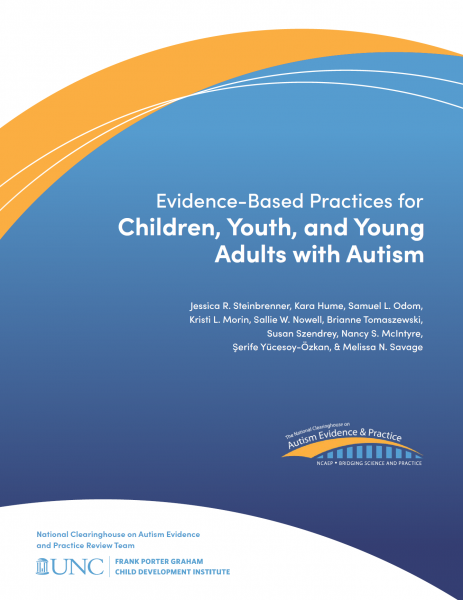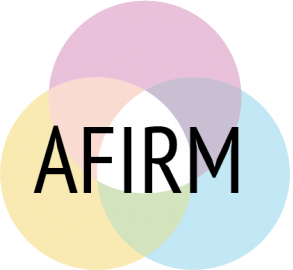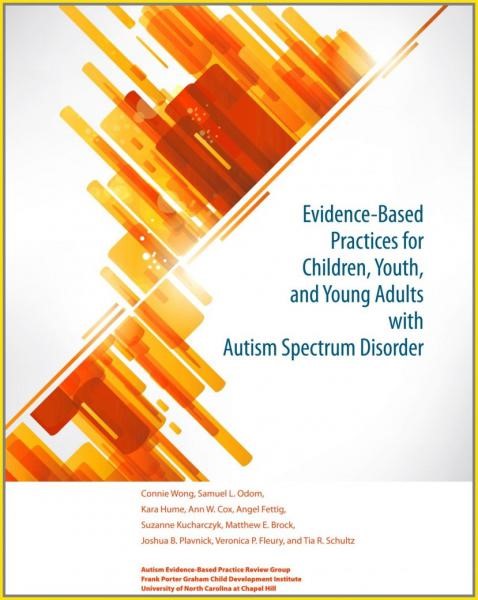2020 NCAEP Evidence-Based Practices Report

Our National Clearinghouse on Autism Evidence & Practice team at the Frank Porter Graham Child Development Institute has completed our NEW report on Evidence Based Practices (EBPs). The report includes literature published from 2012-2017 and the findings are combined with the literature from the previous review from 1990-2011. There are five new practices identified, several reconceptualizations and recategorizations of practices, new data related to the study participants (e.g., race/ethnicity/nationality data) and new information about intervention implementation (e.g., where the intervention was implemented and by whom). Below is the new report, key graphics as individual PDFs, and a frequently asked questions webpage.
Report
Executive Summary and Additional Resources
- Executive Summary: Executive Summary for Evidence-Based Practices for Children, Youth, and Young Adults with Autism Report
- Summary of Null Findings: NCAEP Null Findings Summary
- Ayres Sensory Integration® Companion Guide: Ayres Sensory Integration®: A Companion Guide to the NCAEP Report
Articles (Open Access)
- Hume, K., Steinbrenner, J. R., Odom, S. L., et al. (2021). Evidence-based practices for children, youth, and young adults with autism: Third generation review. Journal of Autism and Developmental Disorders. Early Online. https://doi.org/10.1007/s10803-020-04844-2.
- Steinbrenner, J. R., McIntyre, N., Rentshler, L. F., et al. (2022). Patterns in reporting and participant inclusion related to race and ethnicity in autism intervention literature: Data from a large-scale systematic review of evidence-based practices. Autism International Journal of Research and Practice. https://doi.org/10.1177/13623613211072593.
Frequently Asked Questions
Tables and Figures
- List of Evidence-Based Practices for 1990-2017: Table 3.1 Evidence-Based Practices, Definitions, and Number of Articles Across Review Periods
- Outcomes Targeted by Identified Autism-Based Practices: Table 3.5 Outcomes Identified Across Review Periods
- Matrix to Link EBPs with Target Outcomes and Ages: Table 3.7 Matrix of Evidence-Based Practices, Outcomes, and Age Categories
- Comparison of 2020 NCAEP report and 2015 National Standards Project Report: Table 4.3. Overlap between evidence-based practices identified by NCAEP and NSP
Translations
- Portuguese: Prática Baseada em Evidências para Crianças, Adolescentes e Jovens Adultos com Autismo (Clínica Terapia ABA)
- Spanish: Prácticas Basadas en Evidencia para niños, niñas, jóvenes y adultos jóvenes con Autismo (Neurodesarrollo Quito/Jenniffer Villarreal de la Cruz)
- Executive Summary - Resumen ejecutivo: Prácticas Basadas en Evidencia para niños, niñas, jóvenes y adultos jóvenes con Autismo (Natasha Awad)
Autism Focused Intervention Resources and Modules
 The NPDC created online modules for 27 of the evidence-based practices (EBPs). The modules are called Autism Focused Intervention Resources and Modules (AFIRM). AFIRM Modules are designed to help practitioners learn the step-by-step process of planning for, using, and monitoring an EBP with learners with ASD from birth through age 22. Supplemental materials and handouts are available for download.
The NPDC created online modules for 27 of the evidence-based practices (EBPs). The modules are called Autism Focused Intervention Resources and Modules (AFIRM). AFIRM Modules are designed to help practitioners learn the step-by-step process of planning for, using, and monitoring an EBP with learners with ASD from birth through age 22. Supplemental materials and handouts are available for download.
Disseminating Information on Evidence-Based Practices for Children and Youth with Autism Spectrum Disorder: AFIRM
 The Autism Focused Intervention Resources and Modules (AFIRM) project has translated evidence-based practices identified by Wong et al. (2015) into online learning modules. The impact, usefulness, and relevance of AFIRM has been published online.
The Autism Focused Intervention Resources and Modules (AFIRM) project has translated evidence-based practices identified by Wong et al. (2015) into online learning modules. The impact, usefulness, and relevance of AFIRM has been published online.
Sam, A.M., Cox, A.W., Savage, M.N., Waters, V. & Odom, S.L. (2019) Disseminating Information on Evidence-Based Practices for Children and Youth with Autism Spectrum Disorder: AFIRM. Journal of Autism and Developmental Disorders. Advance online publication. https://link.springer.com/article/10.1007%2Fs10803-019-03945-x
2014 Evidence-Based Practices for Children, Youth, and Young Adults with Autism Spectrum Disorder: A Comprehensive Review
 The National Professional Development Center on ASD (NPDC) completed a review of literature published between 1990-2011 and identified 27 evidence-based practices for individuals with ASD from birth through age 21. These findings have been disseminated broadly in several formats including a report and article.
The National Professional Development Center on ASD (NPDC) completed a review of literature published between 1990-2011 and identified 27 evidence-based practices for individuals with ASD from birth through age 21. These findings have been disseminated broadly in several formats including a report and article.
Wong, C., Odom, S. L., Hume, K., Cox, A. W., Fettig, A., Kucharczyk, S., . . . Schultz, T. R. (2014). Evidence-based practices for children, youth, and young adults with autism spectrum disorder. Chapel Hill: The University of North Carolina, Frank Porter Graham Child Development Institute, Autism Evidence-Based Practice Review Group.
Learn More
Please sign-up to get updates when new resources are available.

